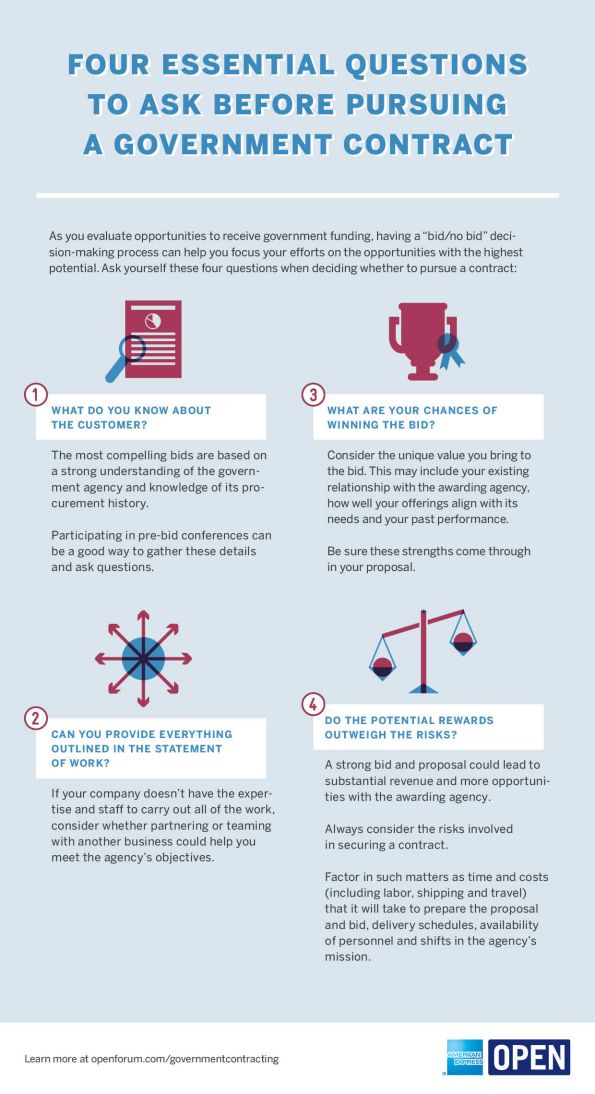Just like you shop differently depending on what you’re purchasing (i.e. buying groceries in the store versus booking a vacation online), the government also buys its goods and services in several ways. The government buys from suppliers who meet certain qualifications, using standardized buying procedures and rules outlined in the Federal Acquisition Regulation (FAR).
Learn which purchase method your small business falls under.
1. Micropurchases.
These are government purchases of individual items under $3,000. Such government buys do not require competitive bids or quotes and agencies can simply pay using a Government Purchase Card or credit card, without the involvement of a procurement officer. To sell your goods and services through micropurchases, contact small business specialists at the agencies you’re targeting. Each federal agency has a specialist to assist small businesses. These specialists act as advocates, providing information and guidance on doing business with their agency, procurement procedures and marketing opportunities.
2. Simplified acquisition process.
A streamlined way for agencies to solicit and compare bids valued at over $3,000 and under $150,000. It requires less documentation and involves fewer approval layers than typical government contracts. These contracts are to be awarded to small businesses, unless the contracting official can’t find two small firms that can compete on price, quality and delivery. If you would like to sell products or services through simplified procedures, make sure you’re registered with the System for Award Management (SAM).
3. Sealed bidding.
Used when an agency’s requirements are very clear, specific and complete. The agency issues an Invitation for Bid (IFB), describing the product or service needed to potential vendors; instructions for responding; conditions for purchase, delivery and payment; and a submission deadline. On a predetermined date, each sealed bid is opened in a public setting by a government contracting officer. All bids are read aloud and recorded. The contract is then awarded to the lowest bidder found to be responsive to the government’s needs. You can review new bid invitations here.
4. Contract negotiation.
A more complicated and time-consuming process typically used by agencies for purchasing highly technical products valued at more than $100,000. Agencies issue a Request for Proposal (RFP), inviting vendors to respond. These proposals can be subject to negotiation after they’re submitted. If the government is merely considering acquiring goods or services, it may issue a Request for Quotation (RFQ) and Sources Sought Notices to gather data from available vendors. Responses to RFQs and Sources Sought Notices are for information-gathering purposes. RFQs and Sources Sought Notices are available for review daily here.
5. Consolidated purchasing.
Governmentwide Acquisition Contracts (GWACs) are used by multiple government agencies to help gain economies of scale from shared purchasing needs such as furniture, carpeting, office machines and non-perishable foods. The government awards these centralized buying vehicles to multiple potential vendors and negotiates prices ahead of time. This way, when an agency needs those goods or services, it can choose one of the vendors on the list and acquire the necessary items much faster than with a traditional RFP process. You can find and respond to GWAC opportunities here. For more information on the different GWACs, click here.
OPEN Forum: Government Contracting is a program designed to connect small business owners to government contracting opportunities, which are an often-overlooked revenue stream. To learn more about how to take advantage of this $500 billion opportunity, visit www.openforum.com/governmentcontracting.
Photo: Shutterstock



